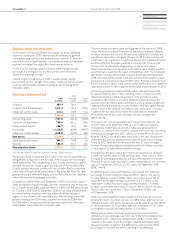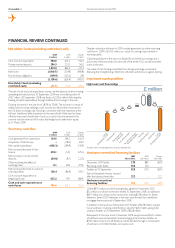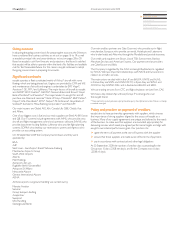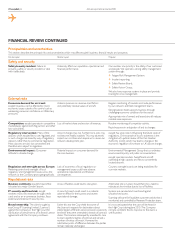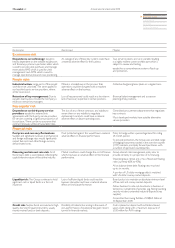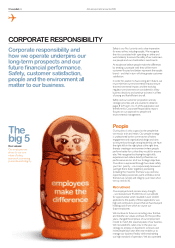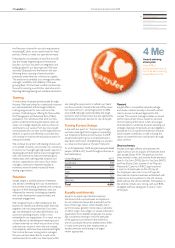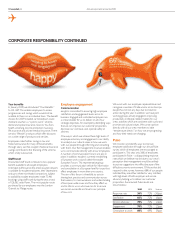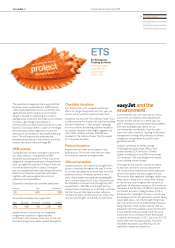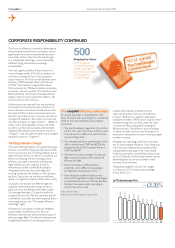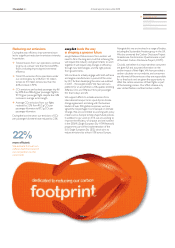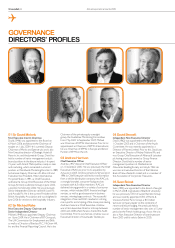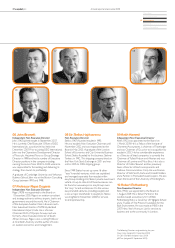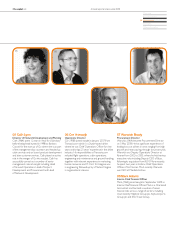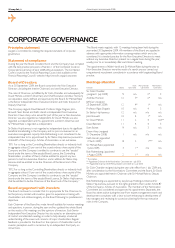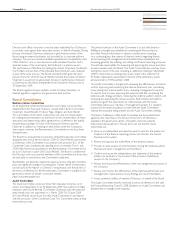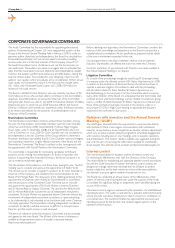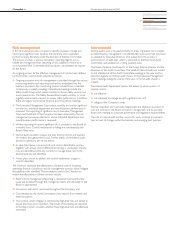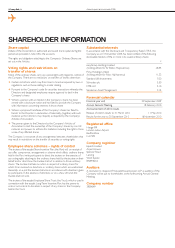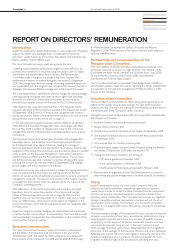EasyJet 2009 Annual Report Download - page 37
Download and view the complete annual report
Please find page 37 of the 2009 EasyJet annual report below. You can navigate through the pages in the report by either clicking on the pages listed below, or by using the keyword search tool below to find specific information within the annual report.
Annual report and accounts 200935 easyJet plc
q
Overview
Business review
Governance
Accounts
Other information
Reducing our emissions
During the year, efciency improvements have
led to a signicant reduction in emissions intensity.
In particular:
Total emissions from our operations continue
q
to grow at a slower rate than the total RPKs
own, indicating improving environmental
efciency
T o t a l C O
q2 emissions from operations under
our control grew by 2.5% from 4.3 million
tonnes to 4.4 million tonnes, less than the
6.0% increase in RPKs
C O
q2 emissions per booked passenger trip fell
by 0.9% from 98.6 Kg per passenger ight to
97.7 Kg per passenger ight, despite the 2.6%
increase in average sector length
A v e r a g e C O
q2 emissions from our ights
reduced by 3.3% from 90.3 g CO2 per
passenger kilometre to 87.3 g CO2 per
passenger kilometre
During the last nine years our emissions of CO2
per passenger kilometre have reduced by 25%.
easyJet leads the way
in shaping a greener future
easyJet believes that emissions from aviation will
need to fall in the long-term, but that achieving this
will require the industry and governments to work
together. It will require step changes in efciency,
through new technologies, and the right policies
from governments.
We continue to actively engage with both airframe
and engine manufacturers in pursuit of this vision
by 2017, further developing the vision we outlined
in 2007 – the easyJet ecoJet. We have set out a
platform for an aircraft that is 25% quieter, emitting
50% less CO2 and 75% less NOx per passenger
Km than today’s aircraft.
We support efforts to include emissions from
international transport into a post-Kyoto climate
change agreement, and along with the business
leaders of over 500 global companies, we have
signed the Copenhagen Communiqué on Climate
Change. We are committed to working with policy
makers across Europe to help shape future policies.
In addition to our work on ETS, we are working to
improve the efciency of airspace and are involved
in the SESAR (Single European Sky ATM Research)
programme, part of the implementation of the
EU’s Single European Sky (SES), which aims to
reduce emissions by at least 10% across Europe.
22%
more efficient:
We estimate that we burn
22% less fuel than some of
our competitors on the
same route.
Alongside this we are involved in a range of bodies,
including the Sustainable Aviation group in the UK.
We also answered the Carbon Disclosure Project
Greenhouse Gas Emissions Questionnaire as part
of the latest Carbon Disclosure Project (CDP7).
Crucially, we believe it is important that consumers
are given full and accurate information on the
carbon impact of their ight. We have provided a
carbon calculator on our website, and consumers
are informed of the emissions they are responsible
for as they book and are given the opportunity to
offset the carbon emissions of their ights as part
of the booking process. Our offset scheme only
uses United Nations certied carbon credits.


